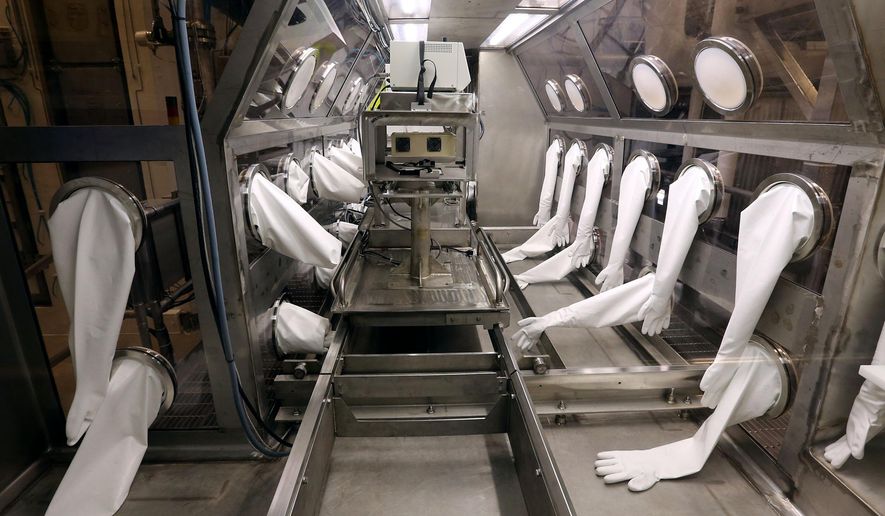Lawmakers on Tuesday criticized the military for a yearslong pattern of complacency with biological threats as Defense Department admitted to shipping live anthrax to nearly 200 labs worldwide.
Rep. Tim Murphy, Pennsylvania Republican, took aim at Utah’s Dugway Proving Ground, which mistakenly distributed live anthrax, for using a “potentially deadly process” for more than a decade without anyone noticing the problems.
“What we have here is a pattern of recurring issues of complacency and a lax culture of safety,” said Rep. Tim Murphy, Pennsylvania Republican. “What’s it going to take to change things this time?”
Mr. Murphy also pointed to past incidents with government labs not handling sensitive biothreats properly, including a mistaken shipment of avian flu, vials of smallpox being found in a building of the National Institutes of Health and, last year, a sample of Ebola being transferred to a lower-level lab not equipped to deal with the highly contagious, deadly disease.
“Despite the growing number of red flags, these incidents keep happening,” he said.
The Pentagon announced last week that 86 labs received live anthrax from Dugway Proving Grounds after the military lab failed to kill spores before shipping. A private lab in Maryland discovered in May that it’s sample that was supposed to be inactive was actually live, sparking an investigation that found more than half of all samples at Dugway contained live spores.
SEE ALSO: ‘Institutional problem’ at Dugway lab contributed to live anthrax shipments: report
Those 86 primary labs forwarded pieces of their samples to 106 secondary labs, bringing the total number of labs that received live anthrax spores to 192 in all 50 states, the District of Columbia, Guam, Puerto Rico, the U.S. Virgin Islands and seven foreign countries: Japan, the United Kingdom, South Korea, Australia, Canada, Italy and Germany.
“The department is committed to putting in place the systems so that ensure that this does not occur again,” D. Christian Hassell, the deputy assistant secretary of defense for chemical and biological defense, said at a hearing of the House Energy and Commerce Oversight and Investigations Subcommittee.
Rep. Diana DeGette, Colorado Democrat, questioned the need for such a high number of labs to be authorized to work with anthrax, asking if fewer labs could still produce the research needed with a lower risk.
“I feel really lucky that we haven’t had anyone infected, but it could happen and I think we’re going on borrowed time here,” she said.
More than 30 people completed a precautionary prophylaxis antibiotic treatment on Monday as a result of the live shipments with no adverse health effects, said Dan Sosin, deputy director at the Office of Public Health Preparedness and Response in the Centers for Disease Control and Prevention.
Defense Department labs kill anthrax spores with radiation and then culture the spores to ensure they are actually dead. In the case of Dugway, both the radiation and viability testing failed to catch the live spores.
SEE ALSO: 11 live anthrax lots found at Dugway lab so far
The military sends inactive spores to military and private labs to facilitate research to calibrate equipment and design new technology and keep troops and other Americans safe from a biological attack.
The Defense Department released a report last week on the anthrax shipments that found an “institutional problem” at Dugway and no standardized way of killing and then testing the inactivated samples among the four Defense Department labs. The report recommended that the department creates a common standard among the labs, which are all under different chains of command.
The Army is also launching an internal investigation that could find an individual responsible for the accidental shipments, officials said.
• Jacqueline Klimas can be reached at jklimas@washingtontimes.com.




Please read our comment policy before commenting.